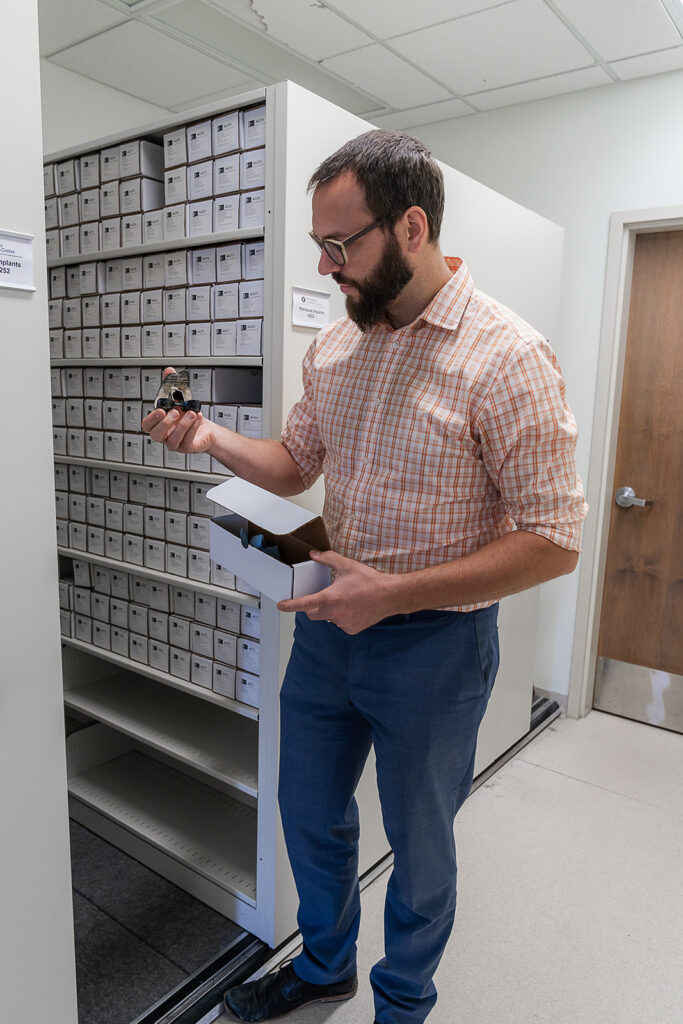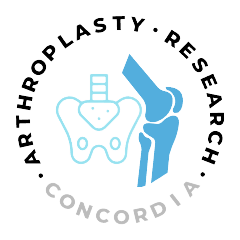Current Arthroplasty Research Priorities | 2023-2026
October 31, 2023
These are a few of the ongoing and current research projects that
Implant Retrieval Database
The Orthopaedic Innovation Centre has over 4,500 retrieved joint replacements stored in our database from revision surgeries.
Most of the cases are collected from the Concordia Hospital, while others are gathered from Grace Hospital, the Pan Am Clinic, and internationally for unique cases.
We perform analyses on the implant retrievals to improve clinical outcomes by reviewing modes of failure, evaluating wear patterns, and making correlations to patient demographics.
Bioskills Laboratory Sessions
We support technological advancements in orthopaedics to improve surgical outcomes and long-term implant performance. The Orthopaedic Innovation Centre houses a state-of-the-art bioskills laboratory fully equipped to simulate a clinical operating room. We use this lab to host surgical training sessions for doctors, students, and other partners for device demonstration, hands-on-surgical experience, cadaveric and artificial modeling, biomedical research, and product development. This allows residents and surgeons to practice procedures before implementing them on patients.
The Benefits of CT Scans To Monitor Microscopic Movement
The Orthopedic Innovation Centre aims to assess the benefits of CT scans when used to monitor the slightest microscopic movement in a joint implant.

Another far-reaching project is being planned to create a first-in-Canada orthopaedic analytic hub (national database on why joints fail) at the research centre located at the Concordia Hip and Knee Institute near to the Concordia Hospital.
This is to assess the benefits of CT scans when used to monitor the critical questions of if and how much a joint has moved.
Dr. Righolt pointed out that, “One way to ensure patient safety is to make sure the implants don’t move less than the width of a hair in the first few years after surgery.” As incredible as the statement may sound, both the CEO and clinical director agree that most implants function efficiently for years without movement. However, there could be undocumented benefits to using a CT scan.
“Currently, we study this using a dual stereo x-ray system (radiostereometric analysis), and we have a dedicated set-up to do this,” he adds. However, “a CT may give us a better 3-D view of the joint, and there would not be a specialized surgical set-up needed.”
The use of CT scans could result in cost savings in equipment, time efficiencies, and potentially spark related studies and permit the OIC to help other medical centres.
These are just some of the exciting projects underway or being planned under the auspices of the Concordia Arthroplasty Research Chair that promise continuous improvements that may well contribute to the invaluable gift of movement for well over 2,000 hip and knee patients at the Concordia Hospital alone – in addition to others in operating rooms across Canada and beyond once data is ultimately collated and shared.“Other centres can perform the CT imaging for the surgeries, but the specialty is going to be in how they analyze the results,” adds the CEO. “Building that knowledge and capacity here means we can help Toronto with their analysis; we can help Vancouver, because they are now able to send us the scans, and we can do the analysis and provide the data for them.”
